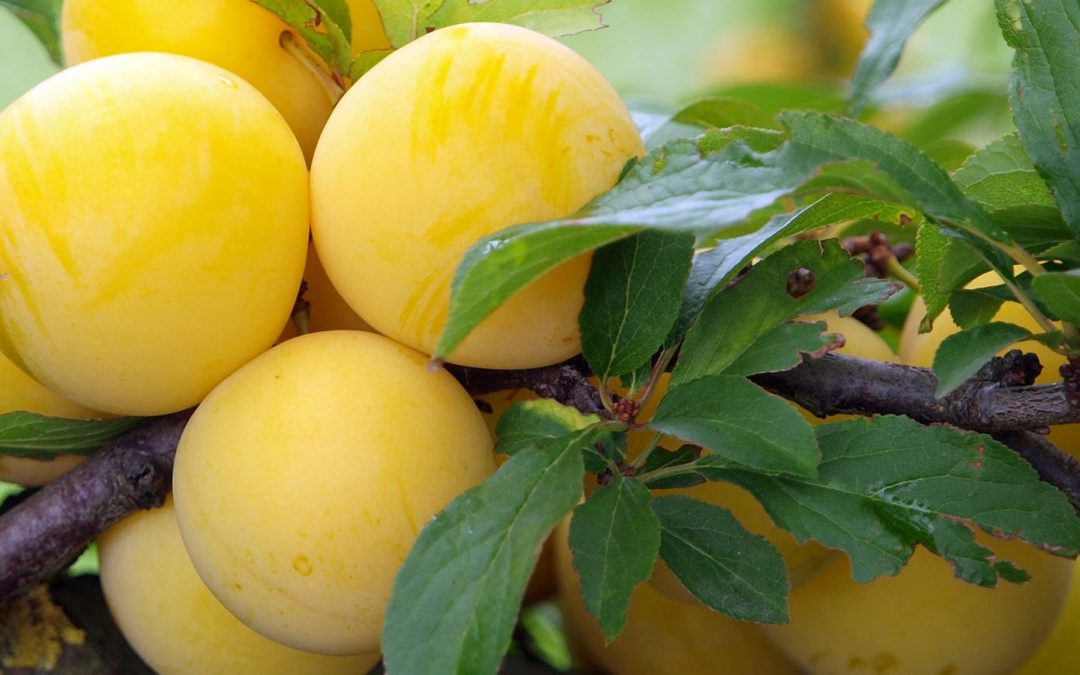The yellow plum is especially loved by gardeners. It is valued for its excellent taste, good yield, ease of care, and decorative qualities. During the fruiting period, the trees are strewn with bright yellow fruits, which are pleasing to the eye, decorating the garden.
Various sweets are prepared from sweet-tasting yellow fruits with a subtle sourness, they are preserved for the winter and consumed fresh. We present a selection of the most popular and delicious varieties of yellow plums with descriptions.
Yellow plum is valued by gardeners for its high yield and decorative qualities.
Table of Contents
Description Of Yellow Plums
Yellow plum is a variety of fruiting plant whose fruit skin is honey-colored, yellowish-green, or creamy white.
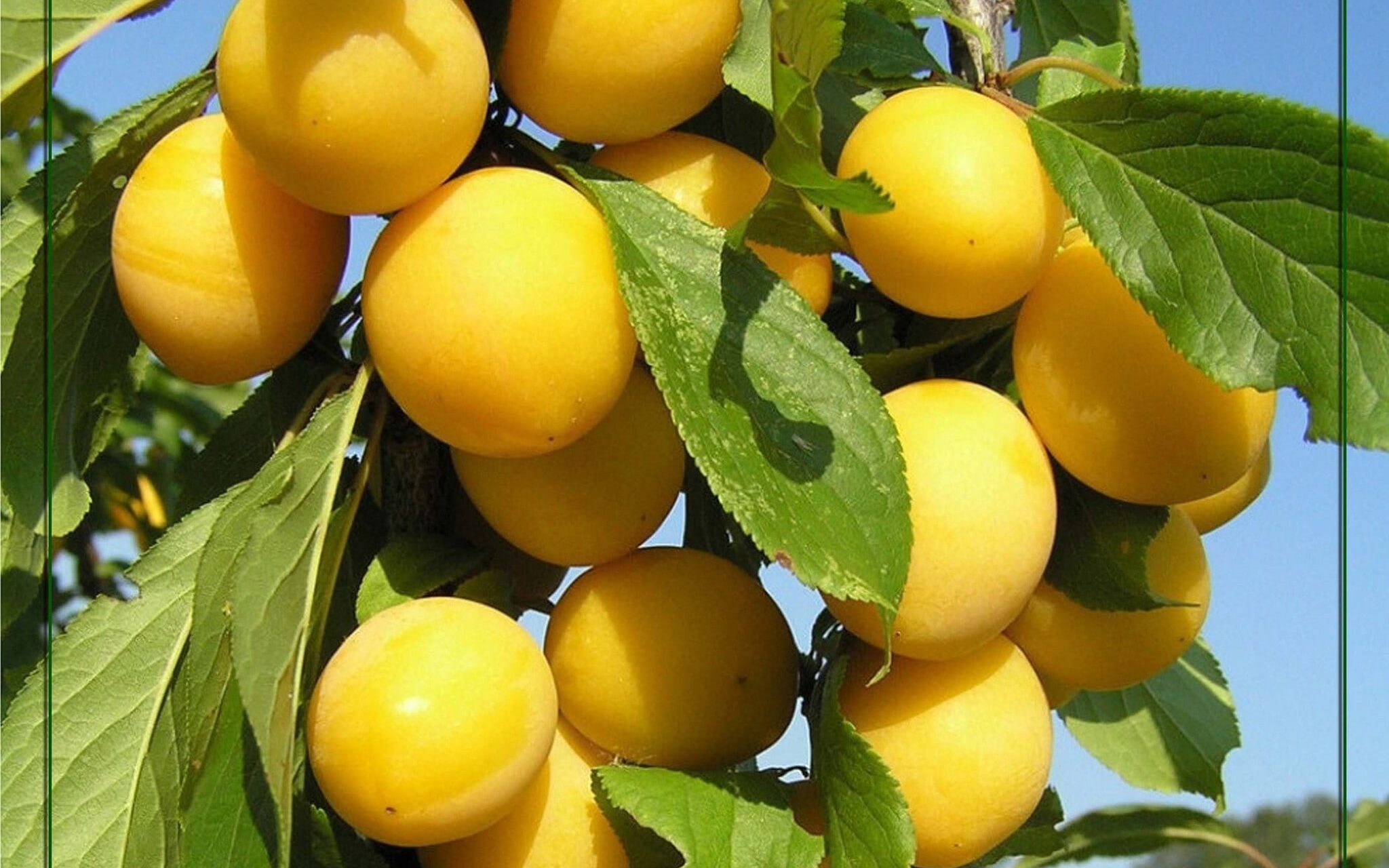
Asia is considered the birthplace of the tree. The yellow-fruited hybrid was obtained by crossing a wild yellow plum with a cultivated cherry plum.
Yellow fruits contain a lot of plant fiber, various vitamins, and minerals (calcium, phosphorus, magnesium, etc.). In fresh and dried form, they have many beneficial properties:
- increase immunity;
- improve vision;
- help normalize weight;
- cleanses the intestines and improves their functioning;
- help cell regeneration;
- improve the condition of the skin, hair, and nails.
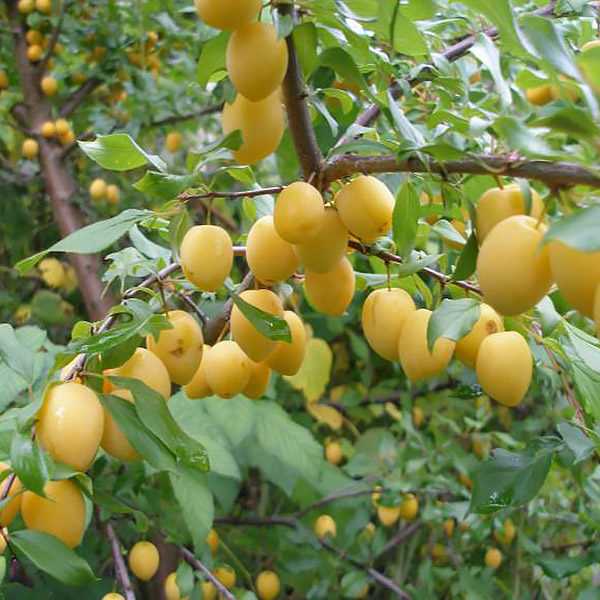
The yellow-fruited plum has several advantages over varieties with blue and red fruits: firstly, the height of an adult plant is lower than that of other species (no more than 7 m), and secondly, many of its varieties are capable of self-pollinating (if there are pollinators on the site, the yield increases noticeably).
In addition, yellow fruits are considered dietary and are excellent for consumption during weight loss.
Yellow plums are grown in different regions of our country. Thanks to successful selection, the species is resistant to changing weather conditions. Many types of fruit trees are grown in the cold regions.
Popular Varieties Of Yellow Plum
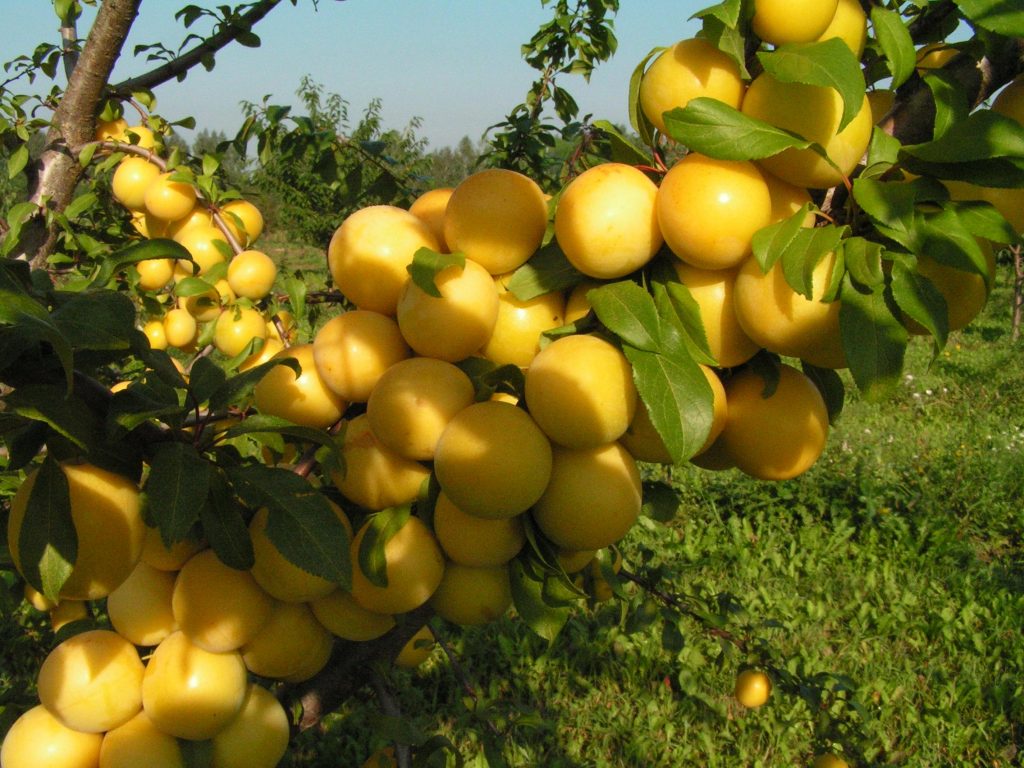
Among the yellow fruits, there are:
- early ripening;
- mid-early;
- mid-season;
- mid-late;
- late ripening.
Early ripening plums ripen first: the harvest is ready for harvest in July.
Early And Mid-early Varieties Of Yellow Plums
Description of the plum variety Yellow Honey is a popular, large-fruited, self-sterile species with high winter hardiness.
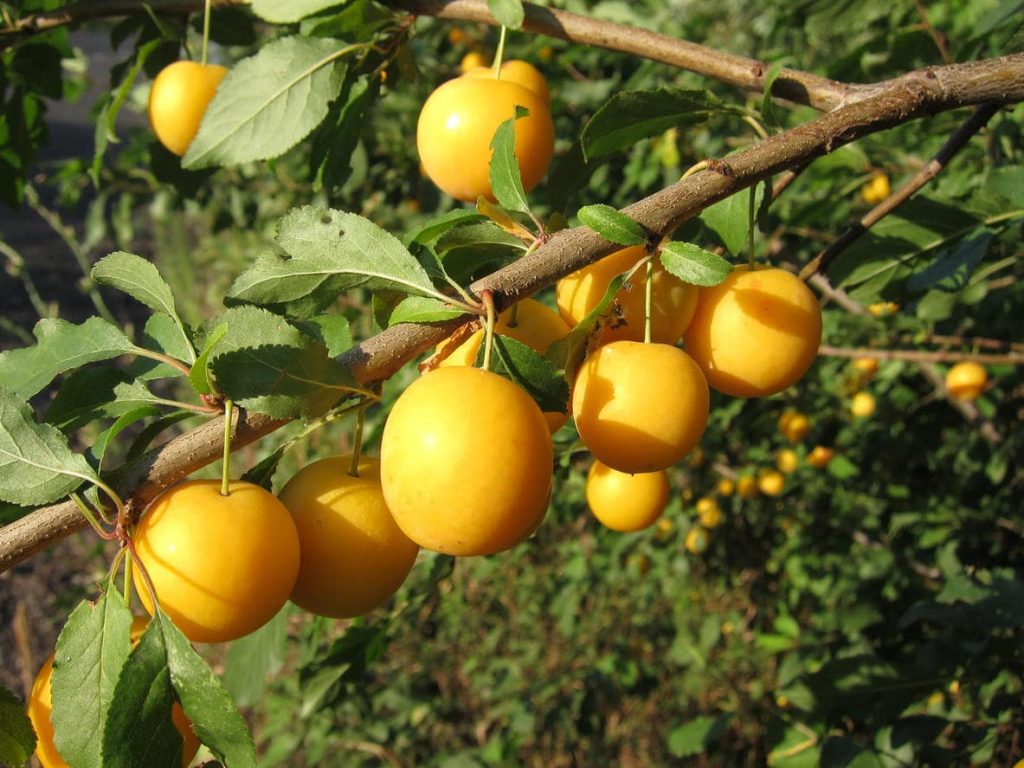
The yellow fruits ripen in the third year of the plant’s life from mid-July to August, the period depending on the region. The yield is quite high: up to 40 kg of fruit are obtained from one specimen.
The trees are tall and have a spreading crown. Planting of seedlings of this variety is carried out at a distance of three meters from each other. Quite large round yellow fruits weigh about 55 g.
Yakhontovaya yellow plum is a fast-growing, tall, and high-yielding variety. The plant reaches a height of 5.5 m.
Large yellow fruits (weighing up to 35 g) with juicy tender pulp and a dessert taste are harvested in August. The tree is not susceptible to damage by various diseases and pests and is frost and drought-resistant.
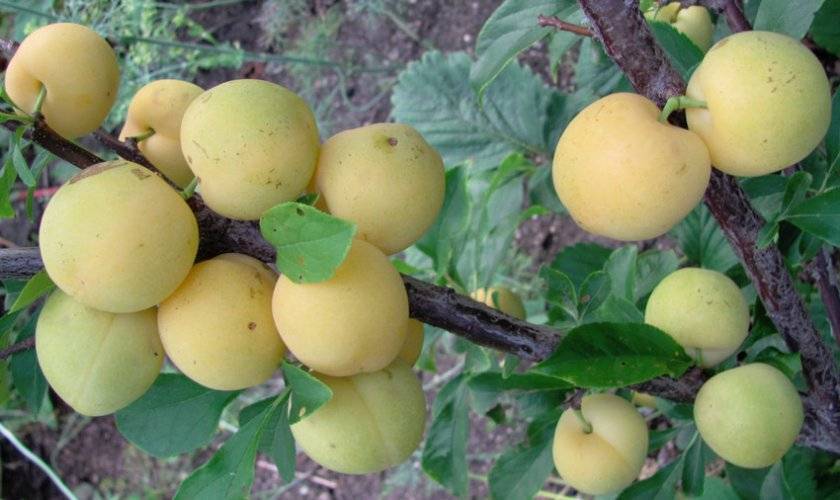
Yellow (golden) ball – belongs to the Chinese subspecies. Up to 15 kg of crop is harvested from an adult specimen. The fruit tastes good, somewhat reminiscent of pineapple and peach.
They ripen in the second half of July and August. Frost-resistant, resistant to many diseases. From a distance, the tree, completely covered with yellow fruits, somewhat resembles sea buckthorn, only with a very large berry.
Altai Jubilee (mid-early) is a small-fruited, self-sterile variety. The fruits are yellowish-orange with a ruddy reddish side. It happens that the fruit ripens completely red, without yellowness. The tree reaches 5 m in height.
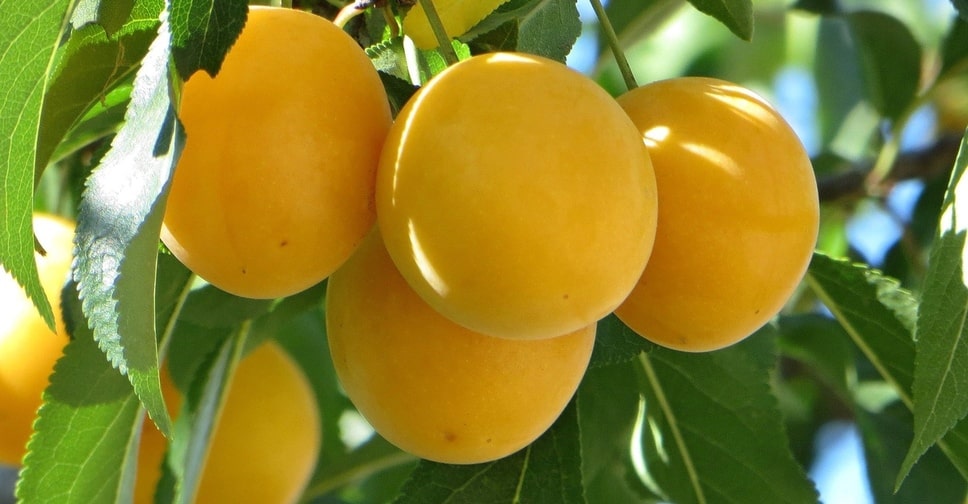
Fruiting begins in the 3rd or 4th year of the seedling’s life. It is characterized by high frost resistance (can be grown in the Urals and Siberia). Resistant to damage by clasterosporiosis.
The disadvantage of the species is low drought resistance.
The fruits ripen at the end of summer: up to 30 kg of harvest is collected from the tree
Mid-season And Mid-late Species
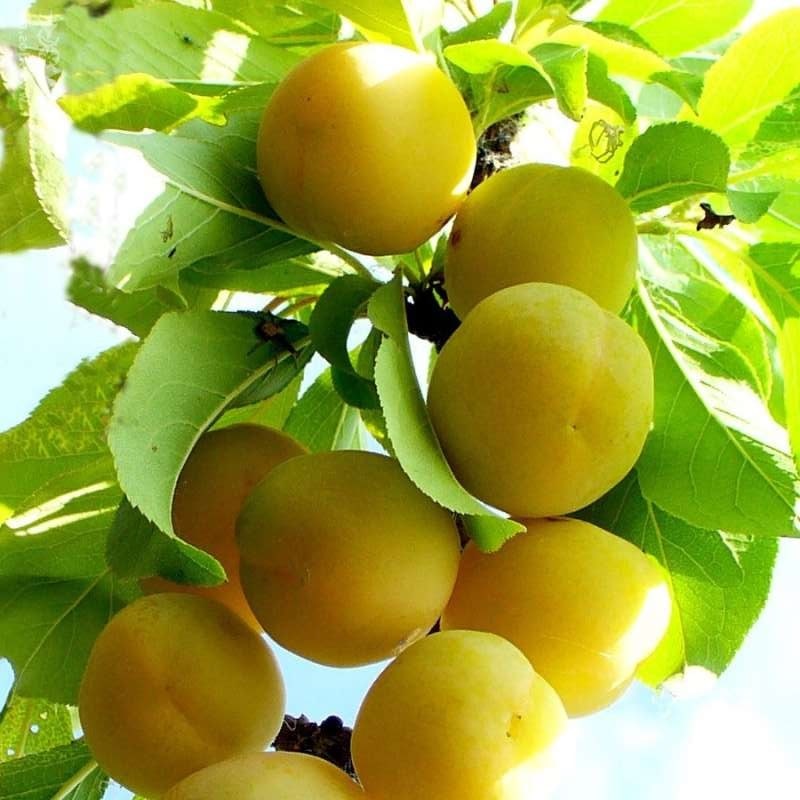
A compote plum is a tree up to 3 m in height with a neat crown directed upward. The first harvest is carried out in the fourth year. The yield is stable – about 20 kg per plant.
The medium-sized yellow fruits are quite tightly attached to the branches. The weight of one copy is 30 g. It has high frost resistance and good drought resistance. It rarely gets sick and is rarely attacked by pests.
Khopty yellow plum is a medium-yielding and frost-resistant species that is immune to various diseases. The yellow fruits ripen towards the end of summer. The height of an adult plant is up to 4 m.
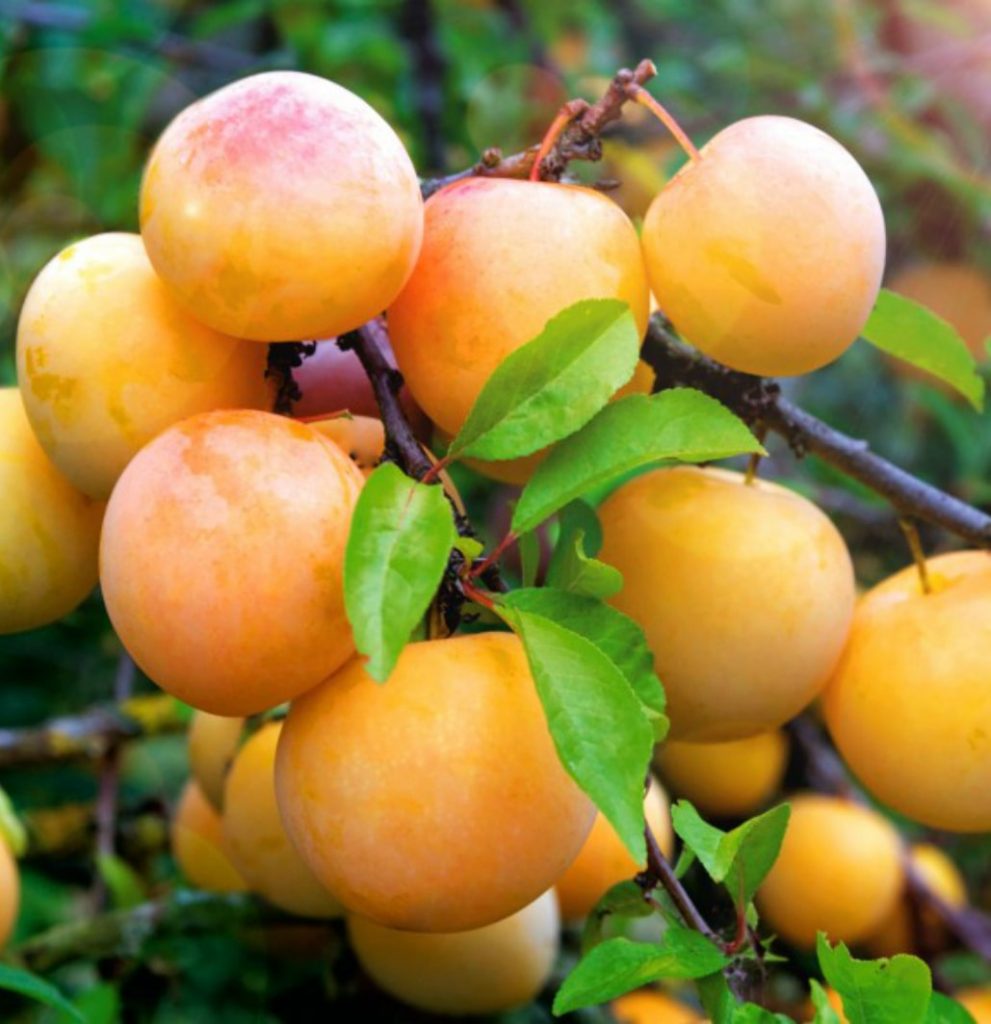
The variety is self-sterile. When growing it, take care of the presence of pollinating trees in the garden.
Ripe fruits with thin skin and a slightly bitter taste (weighing up to 20 g) fall to the ground. The stone is easily separated from the pulp.
Livonian yellow egg (mid-late) is an ancient self-sterile species (pollinator trees will be needed). It showed excellent results when grown in the northwestern region and southwestern zone. The tree with a fairly dense crown is of medium size. Its feature is large double flowers.
The fruits are light yellow with a greenish tint (weighing about 25 g). Their bone is difficult to separate from the pulp.
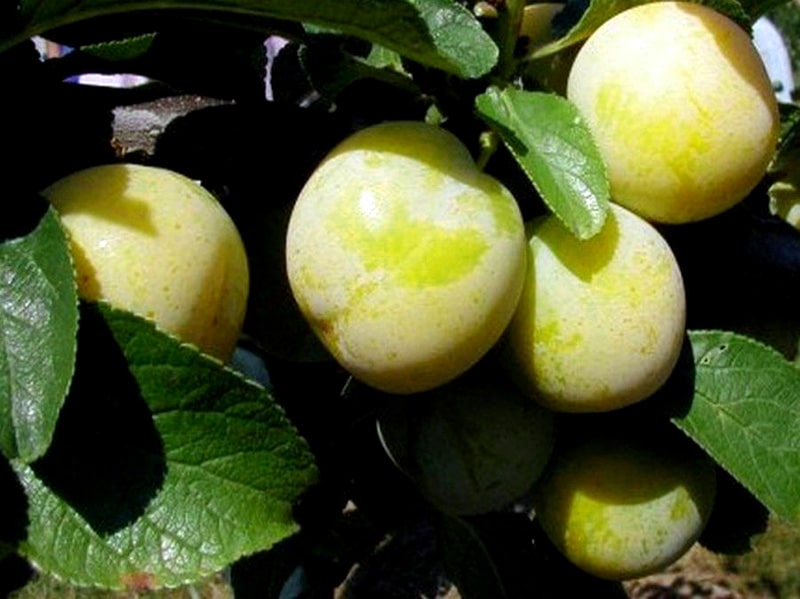
The first harvest is harvested in the fifth year of life, at the end of August or the beginning of September. The tree feels best on a hillock. It has an average yield and good winter hardiness.
Late Ripening Specimens
Yellow Afasca is a sweet, early-fruiting variety of yellow plums with juicy yellow fruits of a rare golden yellow color.
The seedling can adapt to the climate in different regions of the country. It has high immunity to various diseases and has high productivity. The harvest is harvested in late August or early September.
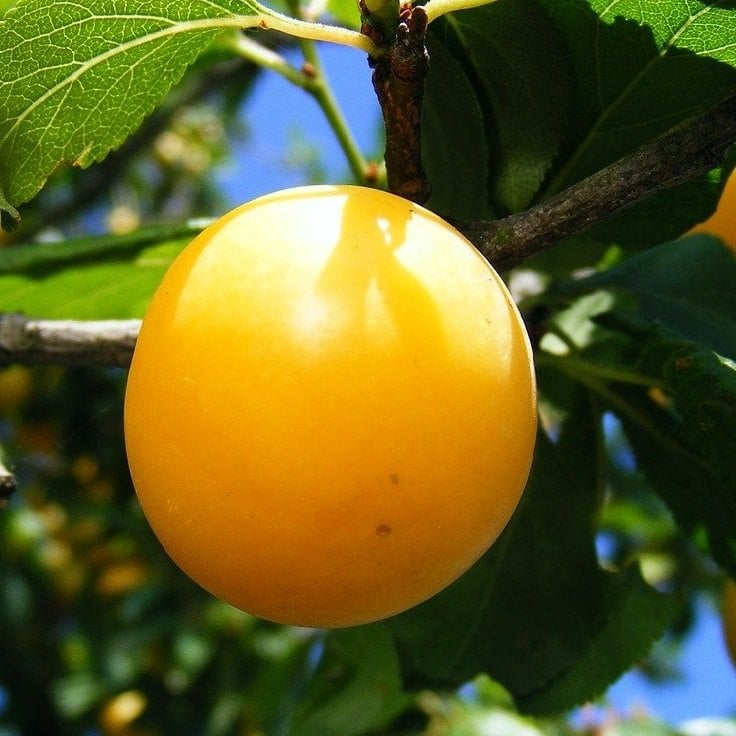
Golden large – partially self-fertile and high-yielding (up to 27 kg of round, slightly sour-tasting fruits, tightly adjacent to the branches, are obtained from one plant).
The harvest ripens by September. Frost and drought-resistant. Ripe plums can be stored in the refrigerator for about six months.
Timiryazev Memory is a self-fertile variety of yellow plums with low frost resistance (in cold regions, winter shelter is required ).
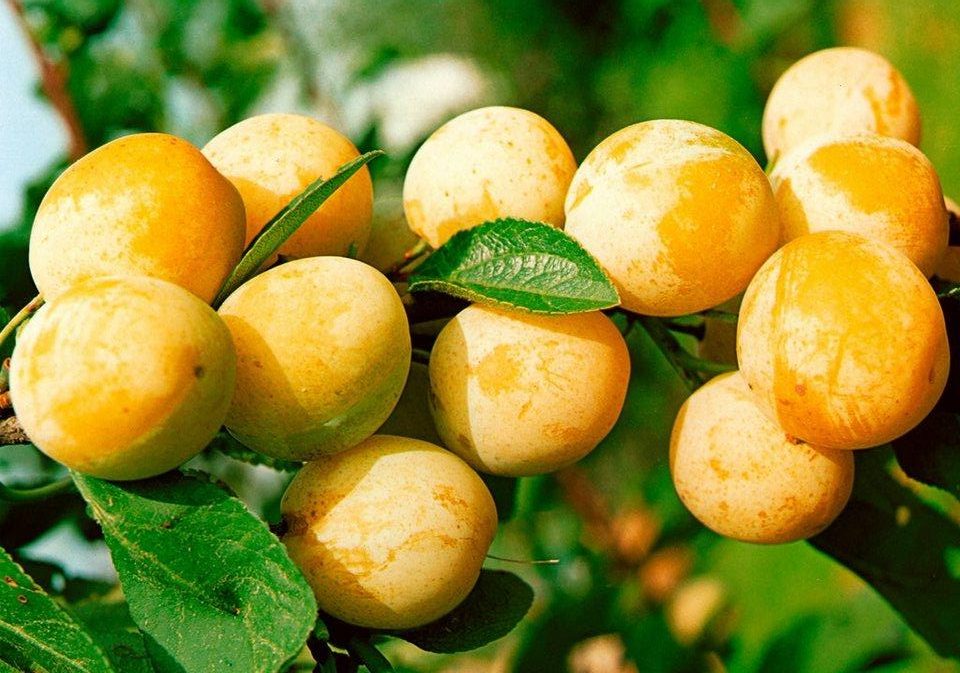
The fruits are ovoid and yellow with a reddish side. The pulp has medium density and a pleasant taste. Productivity is low. Fruits, depending on the region, ripen by the end of August or early autumn.
Large Yellow Plums
Angelina (Angelino) is a late, high-yielding species (ripens at the end of summer), suitable for transportation over long distances.
The tree grows up to 3 m in height and bears fruit regularly. Up to 50–80 kg of crop is harvested from one plant. Resistant to fungal diseases, rarely attacked by insects.

Fruit weight is up to 90 g. Individual specimens reach up to 120 g.
The following varieties also belong to large-fruited varieties:
- The president;
- Starting;
- Gigantic.
Yellow Fruits Diseases and Pests
Yellow-fruited plum, like other fruit trees, is susceptible to attacks by various insect pests, and fungal, viral, and bacterial diseases.

Conclusion
The named varieties are characterized by good winter hardiness disease resistance, and high fertility. The plums are large, tasty, and suitable for all types of processing. When choosing varieties of yellow plums for your site, you should give preference to zoned plants that are adapted for growing in this area.
Explore the efficacy of bone meal fertilizer as an optimal choice for nurturing your plum fruit tree.

